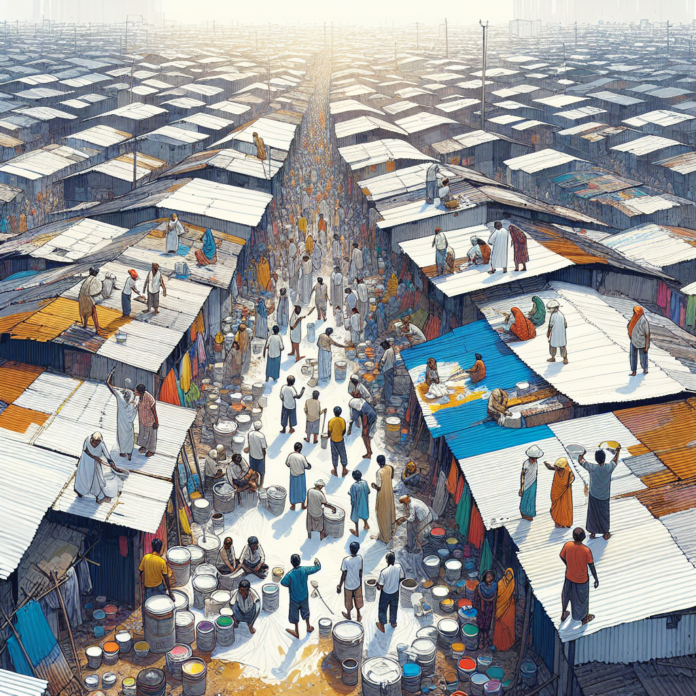Indian Slums Adopt Cool Roofs to Address Extreme Heat
Indian Slums Get ‘Cool Roofs’ to Combat Extreme Heat
In response to the soaring temperatures that plague many regions in India, initiatives have been launched to install ‘cool roofs’ in slum areas. These innovative roofing solutions are designed to reflect more sunlight and absorb less heat, significantly mitigating the impact of extreme heat on urban populations.
Understanding Cool Roof Technology
Cool roofs are typically made from reflective materials that can lower roof temperatures by as much as 30 degrees Celsius compared to traditional dark roofs. These materials include specially coated paints, reflective tiles, and other surface treatments that minimize heat absorption. By implementing these roofs in densely populated slum areas, residents can experience cooler living conditions, which is especially vital during the sweltering summer months.
The Benefits of Cool Roofs
The benefits of cool roofs extend beyond just temperature reduction. They can also lead to significant energy savings by decreasing the need for air conditioning and reducing electricity bills. Furthermore, cooler roofs can improve indoor comfort, enhance air quality, and even contribute to extending the lifespan of the roofing materials.
Community Involvement and Implementation
The implementation of cool roofs in Indian slums has been a community-driven effort, involving local residents, NGOs, and government agencies. Training programs have been established to educate communities about the benefits of cool roofs and how to install them. Residents are encouraged to participate in this initiative, fostering a sense of ownership and pride in their living environment.
Challenges and Future Considerations
Despite the advantages, there are challenges to widespread adoption of cool roofs. Issues such as funding, maintenance, and the need for continued community engagement must be addressed to ensure the longevity and effectiveness of these projects. Additionally, as urban heat islands continue to grow, the need for scalable solutions that can be implemented across various regions remains critical.
Conclusion
The introduction of cool roofs in Indian slums represents a proactive approach to combating the effects of climate change and urban heat. By leveraging innovative technology and fostering community involvement, these initiatives not only aim to improve living conditions but also contribute to a more sustainable urban environment. As more areas adopt this strategy, the hope is to create a ripple effect that inspires similar projects in other heat-stricken regions around the world.
